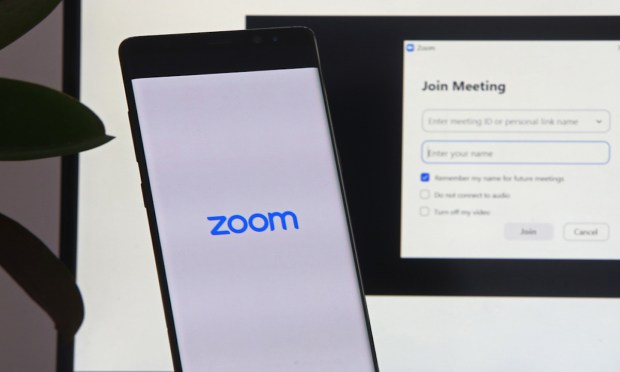Investors Show Zoom Fatigue as Video Collaboration Software Becomes Embedded Workforce Productivity Tool

Becoming a household word in just 20 months, Zoom Video Communications emerged as a technological hero of the pandemic’s work-from-home exodus. Lately, however, the Zoom fatigue syndrome seems more pronounced, as the company’s growth slows and competitors close in.
While Zoom’s fiscal third quarter saw sales rise 35% to $1.05 billion year over year, the prior quarter was 54% higher than last year. In the comparable 2020 period, sales zoomed up more than 360% as lockdowns went into effect and businesses adopted video technology in legions.
“Zoom has been unable to maintain the heady growth it experienced when organizations leaned heavily into remote work after the onset of COVID-19,” The Wall Street Journal reported, adding that “the company also faces increased competition. Microsoft Corp.’s Teams application, which combines videoconferencing and other collaboration features, poses one of the biggest challenges to Zoom’s market share.”
Microsoft Teams, Slack, Workplace by Meta, Google and other players in the Unified Communications as a Service (UCaaS) cloud-based enterprise communications sector are all making moves to steal Zoom’s thunder as the video collaboration story of 2022.
Zoom saw this coming, with Chief Financial Officer Kelly Steckelberg telling analysts in August, “We had expected that [slowdown] toward the end of the year, but it’s just happened a little bit more quickly than we expected.”
At the company’s September Zoomtopia 2021 virtual event, CEO Eric Yuan announced platform updates including Zoom Widget for at-a-glance scheduling, Zoom Whiteboarding across all devices, and a deeper focus on expanding Zoom Phone, which now has two million subscribers.
During its earnings call on Monday (Nov. 22), Yuan also talked up the Zoom Video Engagement Center, an omnichannel solution that “shows our broader commitment to the contact center space. It’s expected to be generally available early next year. Whether it’s the ability to visually whiteboard in and around the meeting or utilize AI to transcribe or translate a meeting live, Zoomtopia demonstrated that previously futuristic capabilities have arrived,” he said.
See also: Video Conference Service Zoom Expects Slowdown as Companies Return to Offices
Collaboration Sector Is Coalescing Fast
While the platform achieved verb status during the pandemic — as in, “we have to Zoom about that” — competitors are looking to capitalize on the video conferencing dependency.
Arguably the biggest shot across the bow to date was the November announcement by Meta (formerly Facebook) and Microsoft about integrating the two company’s collaboration solutions — Workplace by Meta and Microsoft Teams, respectively — with more apps and connections.
The Verge quoted Jeff Teper, head of Microsoft 365 collaboration, saying of that pact, “One thing I’ve learned [is] there’s not going to be a one-and-only communications tool on the planet. People are going to choose a number of tools, so I think it’s on us as responsible vendors to make sure they can integrate and interoperate.”
On Nov. 2, Microsoft also took the wraps off Mesh for Microsoft Teams. In a statement, the company said, “The feature combines the mixed-reality capabilities of Microsoft Mesh, which allows people in different physical locations to join collaborative and shared holographic experiences, with the productivity tools of Microsoft Teams, where people can join virtual meetings, send chats, collaborate on shared documents and more.”
Acquired by Salesforce in July, Slack now has access to Salesforce’s base of some 150,000 enterprise clients — a potentially huge base for the collaboration tool.
Announcing completion of the deal, Slack CEO and Co-founder Stewart Butterfield said in a statement that “we have a once-in-a-generation opportunity to rethink and reshape how and where we work. Salesforce and Slack are uniquely positioned to lead this historic shift to a digital-first world. I could not be more excited for what’s to come.”
See also: Zoom Releases Apps, Events Features